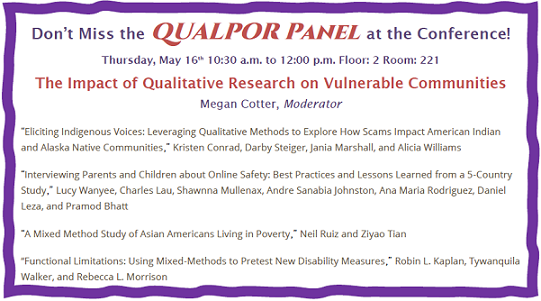The American Association of Public Opinion Research (AAPOR) supports a number of “affinity groups,” i.e., researchers who share in a special interest or aspect of research. One such group is QUALPOR, which provides a forum to share best practices, exchange resources, and discuss new approaches to qualitative research design as well as ways to improve on the integrity of these designs along with the quality and usefulness of the outcomes. QUALPOR has grown to 182 members and become a vital resource for researchers actively involved in qualitative research as well as those who are simply interested in qualitative methods.
Twice a year, QUALPOR publishes a newsletter, QUALPOR News. The April 2024 newsletter is now available. This issue is the lengthiest ever and is full of news and original articles concerning qualitative research methods from a wide assortment of contributors. Although many of the articles pertain in some way to the AAPOR conference being held in Atlanta on May 15-17, 2024, these articles are of great interest to anyone involved in qualitative research.
For instance, Andrew Stavisky (GAO) and Darby Steiger (SSRS) provide a fascinating conversation concerning “Perspectives on AI in Qualitative Research” (see pp. 3-6). And Ann MacFadyen and Amanda Wilmot (National Center for Health Statistics) discuss “Adapting our Methods: Using Photo Elicitation During Cognitive Interviews with Adults with Intellectual and Developmental Disabilities (ID/DD)” (see pp. 13-14).
For anyone going to the AAPOR conference, the newsletter presents a complete list of the amazing amount of presentations and activities devoted to qualitative research at this year’s conference (see pp. 10-12), including
And, as with all issues of QUALPOR News, this newsletter finishes up with a rundown of upcoming qualitative research workshops, webinars, and conferences.
The April 2024 issue of QUALPOR News can be found here. Happy reading!



 In
In